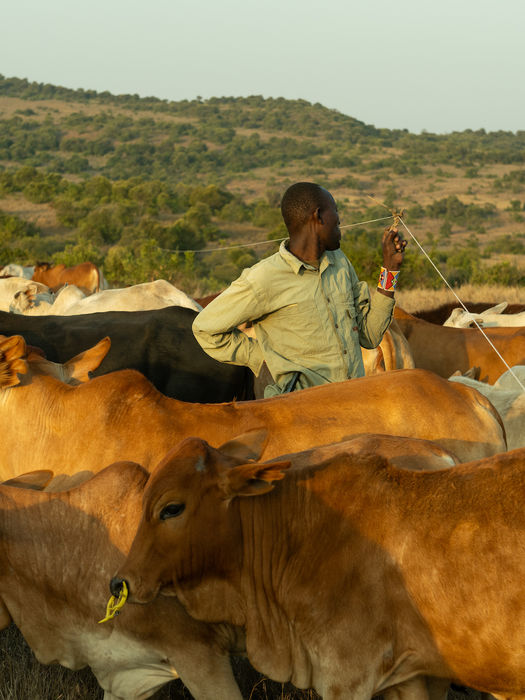
Ultra High Density Grazing
We believe that how livestock are managed is both one of the greatest threats, and one of the greatest opportunities, for our civilization. In the majority of the world’s grasslands, their management is causing ecological destruction. It is easy, therefore, to see why the livestock themselves are blamed for biodiversity loss and climate change. It is often advocated that their removal would solve our problems - but this ignores the essential role they can and must play as ecosystem architects. However, their positive impact on the planet is only possible when managed to replicate natural processes - fulfilling the symbiotic relationship that evolution shaped for them and the rangelands that they inhabit.
Often, degradation is not caused by livestock themselves, but by a lack of understanding of the ecological principles that should guide their management. Livestock have a dual purpose: to feed our families and to regenerate our land. If they are not managed to do the latter, they will eventually fail at the former.
Nature and livestock are inseparable. Healthy soils and grasses depend on well-managed livestock and healthy livestock rely on thriving soils and grasses. Too often, people have been managing only half of the system, neglecting the land that underpins everything. Once those incentives are aligned, change accelerates - quickly and visibly.
This change means profit and security, food on the table and school fees paid. It prevents conflict with neighbours and the devastating losses from droughts or floods.
Over years of practice, observation, mistakes, and successes, we have refined a model for managing livestock within conservation areas. Having overseen some of Kenya’s largest and most successful conservation beef enterprises, we’ve had the rare opportunity to experiment, learn and innovate.
While our methods continue to evolve, one principle stands out: ultra-high-density, non-selective grazing is the most powerful tool we have for restoring rangelands. By grazing cattle at densities of 1,000–3,000 animals per hectare and moving them frequently - often more than eight times a day - we ensure non-selective grazing and deliver intense hoof, dung, saliva, and urine impact. This disturbance jumpstarts ecological processes and drives succession, provided recovery periods are well planned.
The results are transformative: land carrying capacity increases, supporting more life - livestock, wildlife, and people. Tourism benefits, ecosystem services improve, and the livestock enterprise itself becomes stronger.
This approach directly challenges conventional wisdom, which argues for fewer livestock, run at low stocking densities, causing minimal disturbance. That view erroneously sees livestock as competitors for finite resources, best minimized. By contrast, our approach recognizes livestock as ecosystem architects: they don’t just consume grass - their application determines how much more or less grass, biodiversity, and abundance the land can produce.









